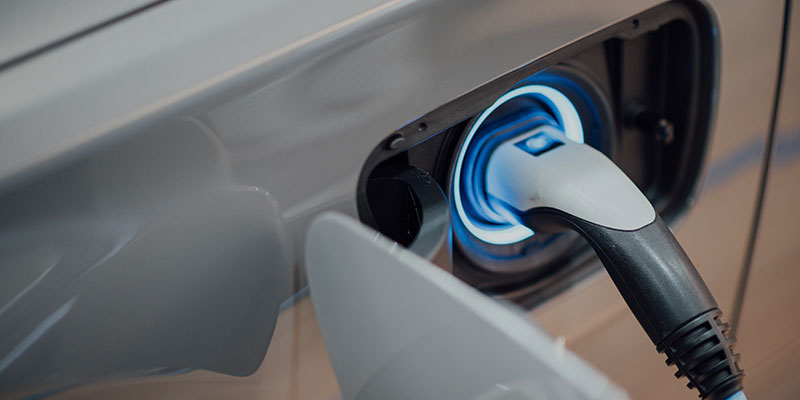Driving Towards a Sustainable Future: Exploring the Evolution, Challenges, and Potential of Electric Vehicles

Driving Towards a Sustainable Future: Exploring the Evolution, Challenges, and Potential of Electric Vehicles
In a world increasingly concerned about the environmental impact of fossil fuels, the evolution of electric vehicles (EVs) has become a driving force towards a more sustainable future. What may come as a surprise is that the concept of the electric car dates back to the 19th century. The journey of the electric vehicle has been long and riddled with setbacks, but this time electric cars look set to stay.
The Early Sparks: Birth and Rebirth
The story begins in 1828 with Anyos Jelik’s small model car powered by a motor. From there inventors such as Robert Andreson, Professor Sibrandus Stratingh, Christopher Becker, Gaston Planté, and Camille Alphonse Faure continued exploring electric propulsion. In 1881 Gustav Trouvé’s first people carrying electric vehicle marked a significant milestone in electric car history. Unfortunately, true acceptance of electric cars was hampered by a lack of power infrastructure. Whilst electric cars found a niche audience, the emergence of gas-powered vehicles, in the form of Henry Ford’s Model T in 1908, delt a massive blow to the electric car movement.
A Rollercoaster Ride: Resilience and Renewal
Prominence declined between the 1920s and 50s, electric cars were overshadowed by the advancements made in gas-powered automobiles. A renewed interest came about in the 60s and 70s due to oil crises, prompting the likes of General Motors to prototype electric vehicles.
In 1971 NASA’s electric lunar rover marked an electrifying feat.
Electric vehicles faced challenges including limited speed and range, limiting take up once again. Then in the 1990s a new era of environmental awareness crept in, leading to improved performance and acceptance.
Turning Point: The 21st Century and Beyond
The 21st century has marked the turning point for electric vehicles. In 2008 the Tesla Roadster demonstrated the potential of EVs and stood them as competitors to their gas-powered counterparts. In 2010 Nissan’s “Leaf” marked the first mass-market all-electric car. The subsequent surge in sales brought EVs into the mainstream.
By January 2023, electric vehicles had claimed 10% of global market share and in May of the same year the Tesla Model Y became the world’s bestselling vehicle.

Advantages and Challenges of Electric Vehicles
Electric vehicles offer a whole host of advantages both for consumers and the environment.
Benefits include;
- Reduced emissions
- Lower maintenance requirements
- Exemption from congestion charges
- Lower running costs
- Decreased noise pollution
- Home charging
- Regenerative braking
Challenges include;
- The environmental impact of battery production
- The source of electricity
- Charging infrastructure limitations
- Initial purchase costs
Charging Ahead: Innovations in EV Charging
The journey to sustainable transportation includes the evolution of the EV charging infrastructure. Innovations, which have had to happen in order to help enhance charging speed and efficiency, but there is still a long way to go. Currently many possibilities to improve charging speed, range and efficiency are being researched.
- Bidirectional Charging – EV chargers that can supply and receive power, which contributes to grid stability.
- Dynamic Charging – The technology to enable charging whilst an electrical vehicle is in motion, whether it be electrified roads or overhead power lines.
- Smart Charging – The optimisation of a charging schedule based on supply, demand, and grid stability.
- Portable Charging – Lightweight, portable chargers for convenient on-the-go charging.
- Solar Charging – Integrated solar panels providing renewable energy.
- Wireless Charging – The elimination of physical plugs, by providing charging pads.
- Battery Performance Improvements – The increasing of battery capacity and longevity in order to extend driving range.
- High-Capacity Charging Stations – The use of high-capacity chargers in order to reduce charging times.
- Cobalt-Free Batteries: Developing batteries that do not need cobalt, which is a problematic material.
Environmental Impacts: Unveiling the Green Reality
EV's have both positive and negative impacts on the environment.
Positives
+ EVs emit no tailpipe CO2 emissions.
+ Contribute to lower noise pollution.
+ Often utilise eco-friendly materials.
Negatives
- The source of the electricity used to charge EVs.
- Extraction of Lithium and cobalt for batteries.
- Recycling of used batteries.
The Road Ahead: Paving the Way for an Electric Future
The future of the electric vehicle is bright, in fact, estimates suggest that by the middle of the century, over half of the vehicles on the road will be electric. Forecasts indicate a rapid transition from the gas-powered car to EVs, with a large portion of new car sales comprising of EV sales. With the evolution of the industry comes the anticipation of an overhaul of existing infrastructure and enhancements in battery performance.
Alternatives on the Horizon
But EVs are not the only option on the Horizon. Despite the promising trajectory of EVs competition is emerging in the form of Biofuels, Hydrogen-powered cars and thermoelectric cars.
Hydrogen-powered cars offer an intriguing alternative, driven by combustion engines with zero CO2 emissions.
Biofuels like sugarcane and corn provide a greener fuel source. Then there’s thermoelectric cars, which convert heat into electricity.
The future of transportation holds diverse possibilities, each with its own set of unique advantages and challenges.
In the race towards a more sustainable future, electric vehicles have emerged as a driving force. Their evolution, challenges and potential, paint the perfect picture of transportation and environmental responsibility going hand in hand. As technological advancements continue their acceleration and consumer demand grows, the road ahead promises to be transformative.
Explore our white paper on the European Electric Vehicle Industry.





